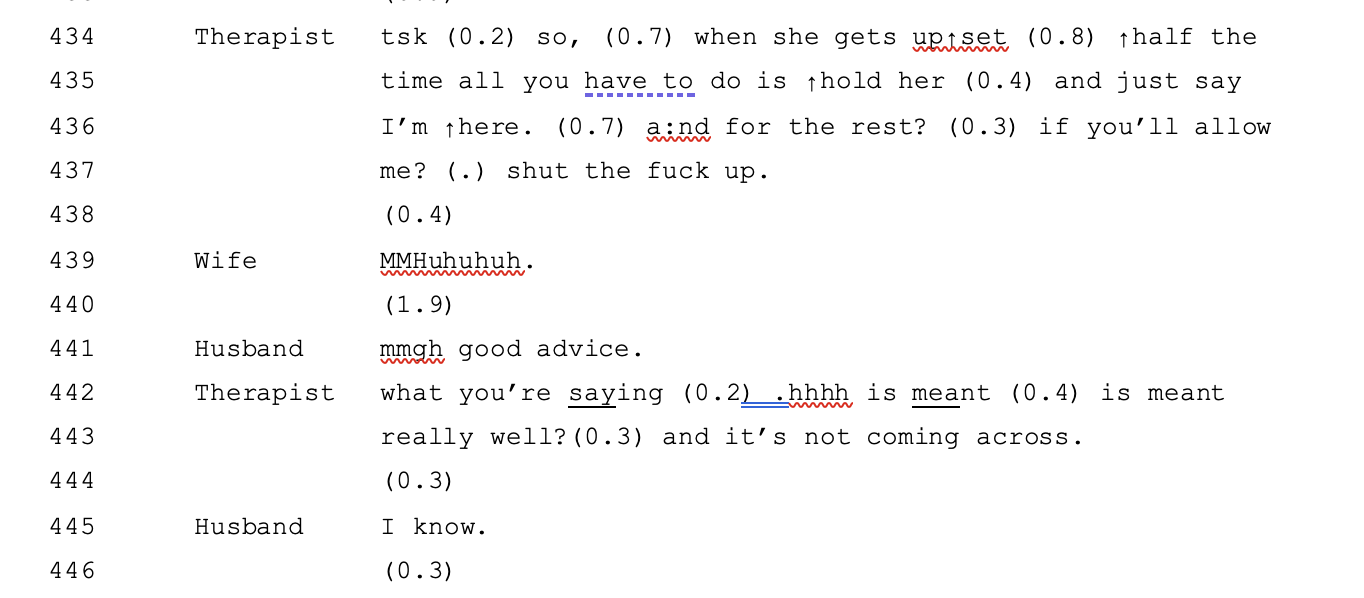Why pay close attention to talk?
On completion of this introductory module, you’ll understand:
- what conversation analysis is;
- why conversation analysis is so well suited to understanding the interactional practices of therapy;
- how to successfully complete the course to record your CPD.
We’ll cover this ground in the next two sections.
But to begin, I’d like to draw your attention to the sorts of things we are achieving in therapy through talk.

Have you heard of Esther Perel?
I came across her podcast Where should we begin? thanks to Ira Glass on This American Life
Esther Perel is a psychotherapist, New York Times bestselling author and the host of the hit podcast Where Should We Begin? Essentially, in the podcast, Esther records one-off couples therapy sessions. In this clip, Esther is working with a couple; the husband had an affair for years. Towards the end of the session, we hear this:

The extraordinary thing is that the husband responds by agreeing with this advice from Esther (“mm good advice”; line 441).
How the hell did Esther manage to advise the husband to “shut the fuck up” and manage to keep him on side?
His wife laughs and he earnestly agrees!
Given that this is a one-off session (no prior relationship between the couple and the therapist), Esther was able to achieve this through the preceding interaction. To keep both parties ‘on side’ must be achieved interactionally.
We can move beyond the vague ‘building rapport’ as a description of what is happening to identify the actions used to achieve the positive stance in this interaction. In other words, with conversation analysis, we can explain how the ‘rapport’ has been built.